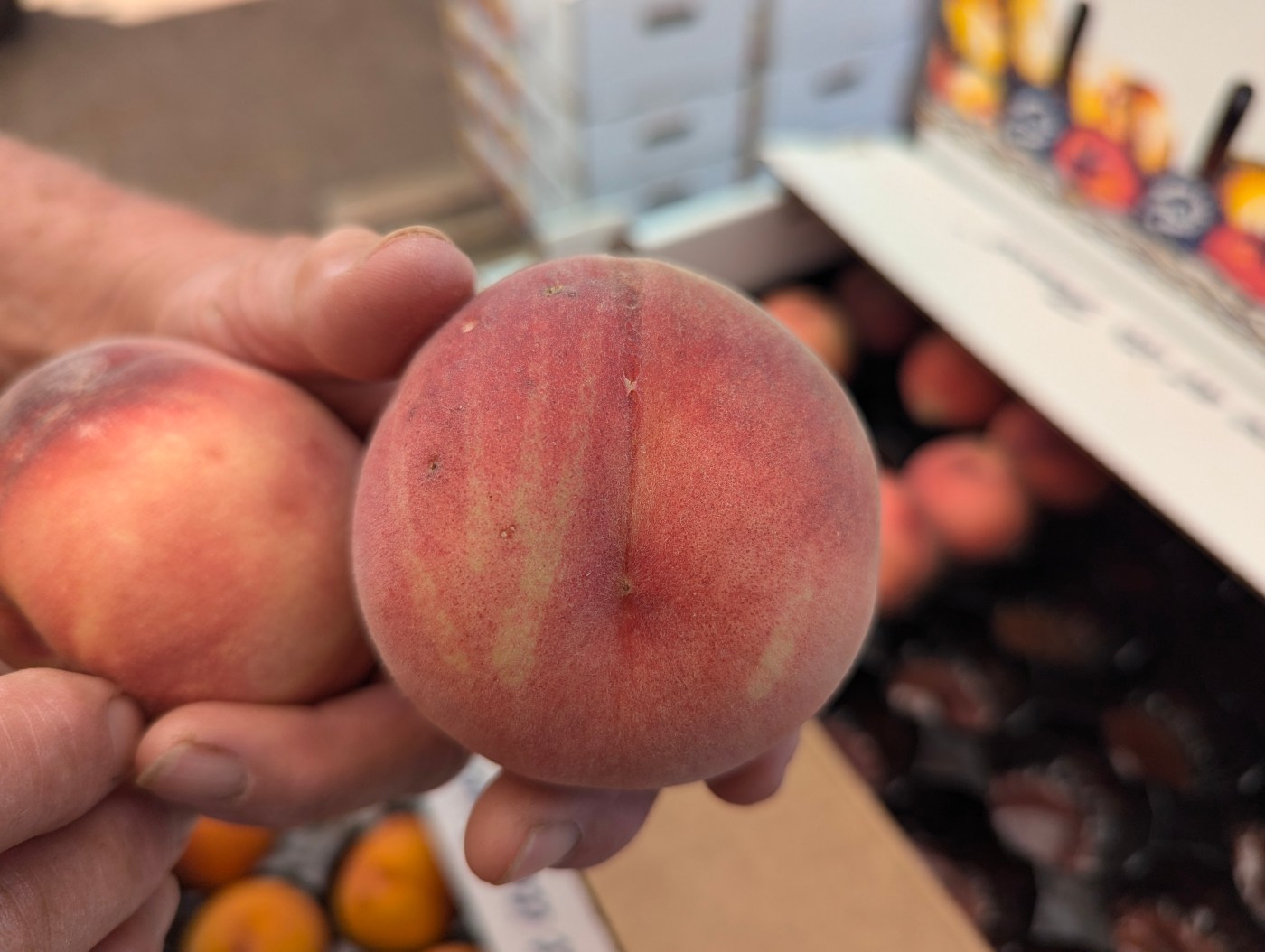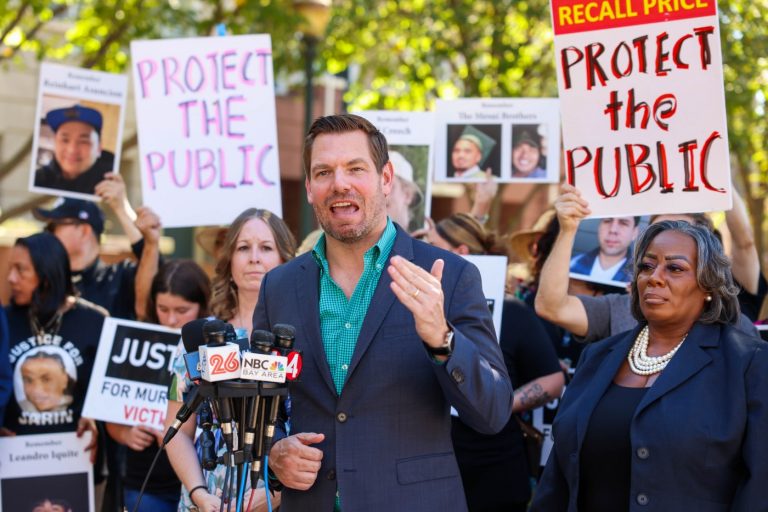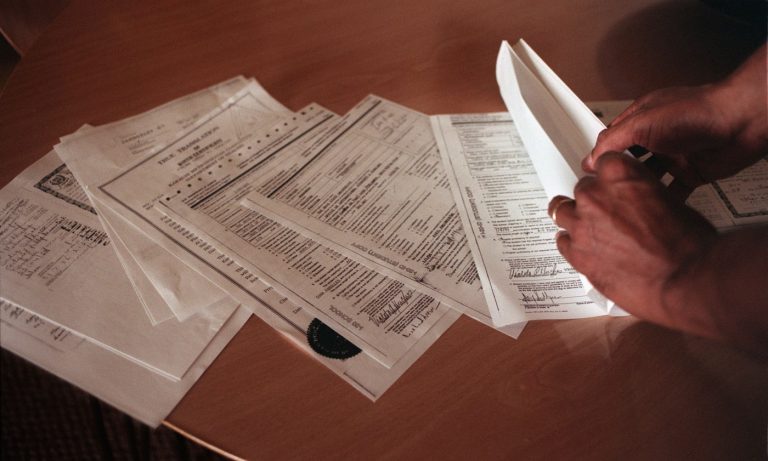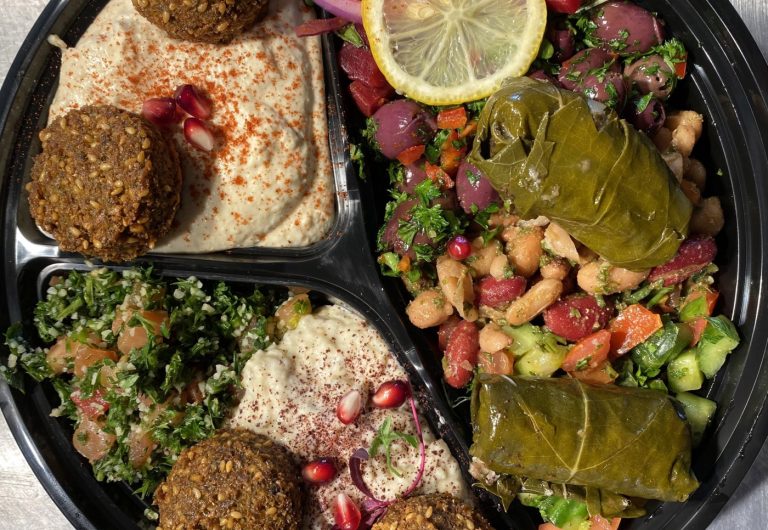PARADISE — The peaches of Noble Orchards in Paradise arrived late this year, something of an anomaly.
Business owner Laurie Noble said she’s noticed slow changes to the orchard over the years, but this year seemed to validate her concerns.
“I’ve always had my eye on the sky,” Noble said. “And yeah, things have changed. Things have changed drastically.”
The heat in 2024 appears to have had a major impact on local agriculture with daytime temperatures well into the triple digits and nighttime temperatures, when cooling should be expected, to nearly follow suit.
Boxes full of different varieties of apples are lined up at Noble Orchards in Paradise, California on Monday, Sept. 23, 2024. (Jake Hutchison/Enterprise-Record)
As farmers know, weather plays a large role in crop schedules and yields in any given year. Butte County Farm Bureau Executive Director Colleen Cecil noted that prunes and walnuts also began producing a bit late this year.
“A farmer will tell you that weather impacts and dictates when (production) is going to happen,” Cecil said. “Especially when we get toward the end of the growing season. That’s when trees definitely slow down in the process to get the prunes and peaches to that sweet level.”
Cecil said few were surprised by the late production season given the extreme heat over the summer.
“It’s always dependent on the weather that year,” Cecil said. “It gets so hot that trees stop doing what they’re supposed to do to produce the product.”
The heat isn’t the only factor that can create complications from an unbalanced weather year. As peaches were organized into boxes at the orchard, Noble noted that the fruits were also affected by the early storm events. Some were hit with rain and even hail.
Noble said hail can damage the fruit directly, particularly if it falls hard enough to penetrate the fruit’s skin which can make it harder and difficult to cut into.
Rain can change how the fruit looks, creating permanent stripes down the sides of the fruit, though it doesn’t change the taste.
“It doesn’t affect the flavor, but if you’re trying to do a gift box, it doesn’t look normal,” Noble said.
How it happens
Heavy heat that fruit-bearing trees are not accustomed to plays a large role in how those trees will be produced throughout the year, but not necessarily in obvious ways and may not even be an issue tied only to the summer months.
Chico State professor Mark Stemen noted that many fruit trees often require chill hours, which typically come in the night when temperatures drop.
“When we talk about climate change, we often talk about how it’s getting hotter,” Stemen said. “What we don’t realize is that nighttime lows are rising faster than daytime highs, and we’re seeing that all over the globe. A lot of trees need a certain number of hours when temperatures are below 45 degrees and above 32 degrees.”
Stemen said a lack of these chill hours throws off the trees’ biological clocks, which can shift blossom times.
“Peaches are one that is in danger of not getting enough chill hours,” Stemen said.
Stemen went on to say that climate change has been a key factor in changes to localized crops in previous years leading up to now.
“We are now — and this is not just for large-scale farms, but small gardens, too — in a different climate zone than were historically have been,” Stemen said. “Climate zones are moving north at an average of about 50 feet a day. That doesn’t sound like much until you start adding that up.”
To curb some of these effects, Stemen offered up some solutions.
“There are two things we can do about it,” Stemen said. “One, when you find yourself in a hole, stop digging. We really need to stop producing greenhouse gasses that are affecting the climate. One of the really insidious things about climate change is that it takes about 10 to 15 years to affect the climate. We’re being affected by greenhouse gasses from a decade ago and in a decade from now we’ll be affected by the gasses we are producing now.
“The second thing is to start shifting and adapting to the warmer climate. Different varieties require different chill hours.”
Stemen added that it would require effort but said he believed it to be possible to change the course.
“There are lots of things we can do,” Stemen said. “The one thing we don’t want to do is stick our head in the sand.”
Noble echoed the sentiment of Stemen regarding climate change and its effect on crops.
“This is probably the result of climate change,” Noble said. “It’s having a big impact on this business this year.”
The new season
With Johnny Appleseed Days quickly approaching, Noble has been shifting gears.
While the apples haven’t quite been through what the peaches have been, some did show signs of damage and bruising, though the vast majority are looking promising.
Related Articles
$1.5 billion project to expand major Bay Area reservoir falls through
A pediatrician wrote the book on how climate change is making kids sick
Red and blue states have big climate plans. The election could upend them
What to know about fracking, false claims and other climate issues mentioned during the debate
Column: Your favorite wine regions will feel the heat
“Our apples are starting, and we have six varieties of apples on the stand so far,” Noble said. “I don’t know how many total varieties we will have. We’re only going to have a box or two of some because they’re young trees, but we will have them through the season.”
Noble is preparing for both days of the event in Paradise on Oct. 5 and Oct. 6, but said the second day is when the orchard typically allows people to pick their own apples.
“The following day we’re going to do Johnny Appleseed at the Farm,” Noble said. “We will be doing an apple pick. More than likely, it will be Granny Smith apples only.”













+ There are no comments
Add yours